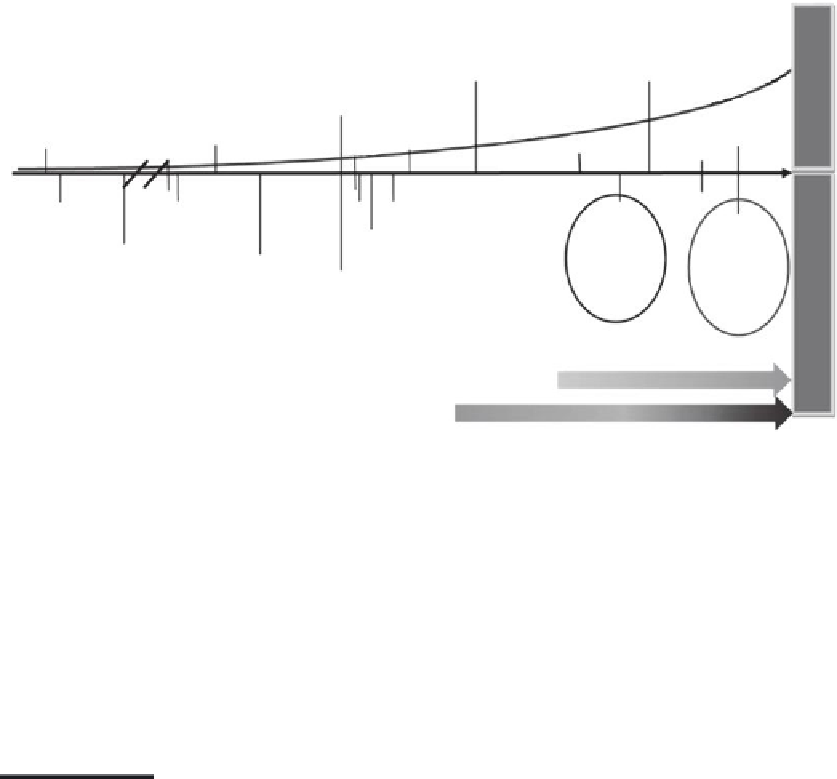Environmental Engineering Reference
In-Depth Information
“Pesticide
era” 30
pesticides
1940-1960
Pharmaceuticals
in water supplies
US 1980
Sulfur as
large-scale
insecticide
UK 1840
To tal organic
chemicals
exceeds
86,000
2000
Sumerians
use sulfur for
insecticide
2500 BCE
First
petrochemical
plant US 1920
US Clean
Water
Act
1972
DDT
banned
1960
1900
1800
First record
of filtration
2000 BCE
Municipal
filtering
UK 1805
UV arc
lamp 1901
Municipal
UV
treatment
France 1909
Advanced
oxidation
US 1977
Puralytics
process
developed
US 2007
Reverse
osmosis
France
1748
Ozone
treatment
France 1906
Chlorination
UK 1850
Ultrafiltration
Germany 1907
Last 50 years most contaminants
Last 100 years 2 new treatment processes
FIGURE 24.3
Current water puriication status: new pollutants, old puriication technologies.
these treatment technologies were invented and which cannot practically be removed by
these technologies. What is needed are new treatment technologies that address 21st cen-
tury contaminants, especially organic chemical compounds, with high energy and water
eficiency and with simple installation and maintenance suitable for developing world
deployment, providing low cost, safe drinking water.
24.2 Developing World and Crises
In the developing world, many point-of-use (POU) water puriiers for pathogenic contami-
nants have been developed, such as disinfecting chemicals, antimicrobial ilters, and ther-
mal or sunlight disinfection systems; however, the ability to address toxins are severely
limited in these solutions. In fact, no practical point of use solutions are available that
satisfy the basic requirements established by the WHO, including removal of pathogens,
chemicals, and heavy metals [3].
In these guidelines, WHO establishes the need to address not only the microbiological
contaminants in water that cause acute illnesses, but also the many other contaminants that
lead to chronic health issues. Speciically, WHO deines safe drinking water as water that
“does not contain any signiicant risk to health over a lifetime of consumption, includ-
ing different sensitivities which may occur between life stages.” [3]
Many common contaminants in polluted water are well known to cause cancer, defects in
infants or other illnesses, as well as affecting neurological processes, even at consumption
rates as low as 2 liters per day.

